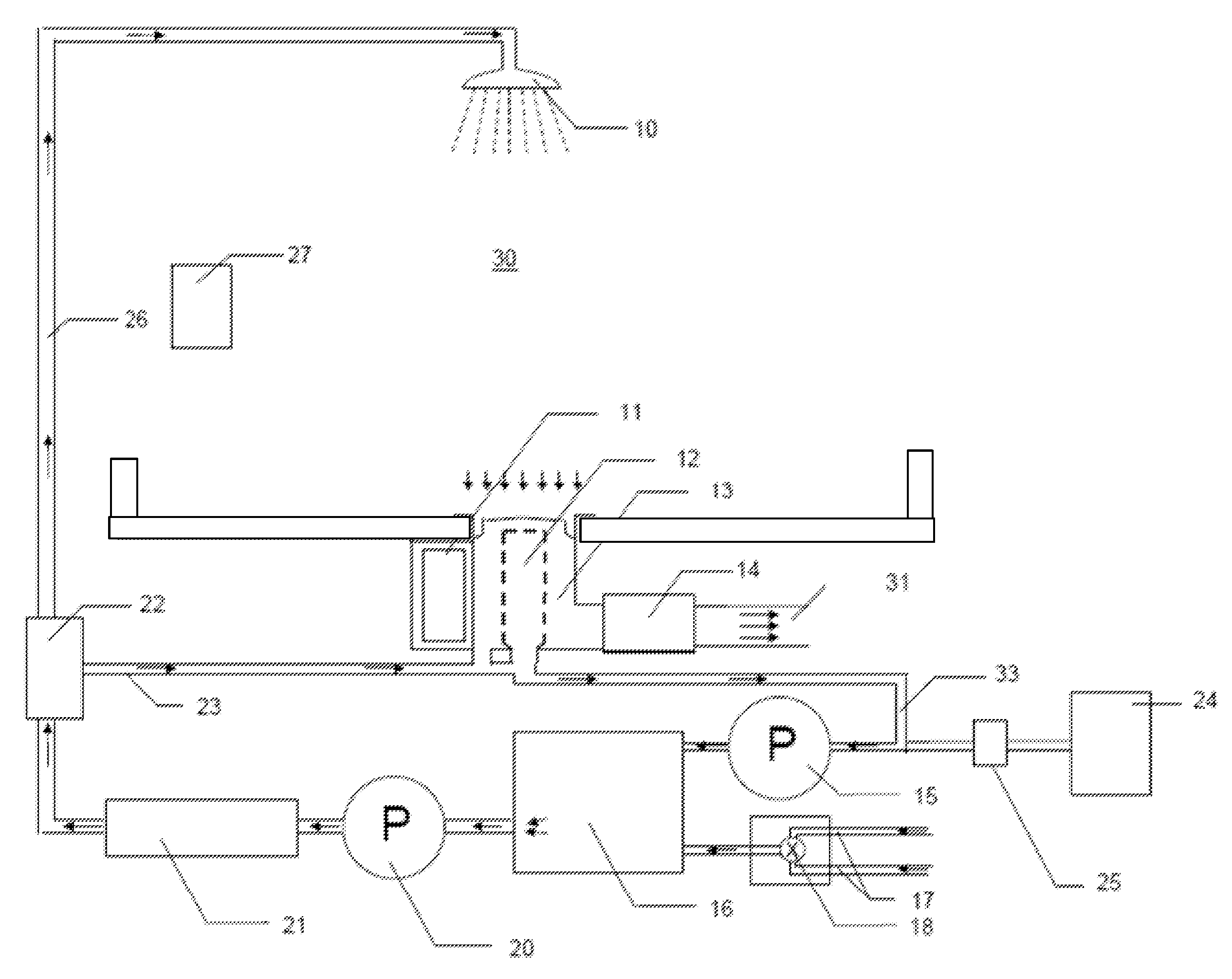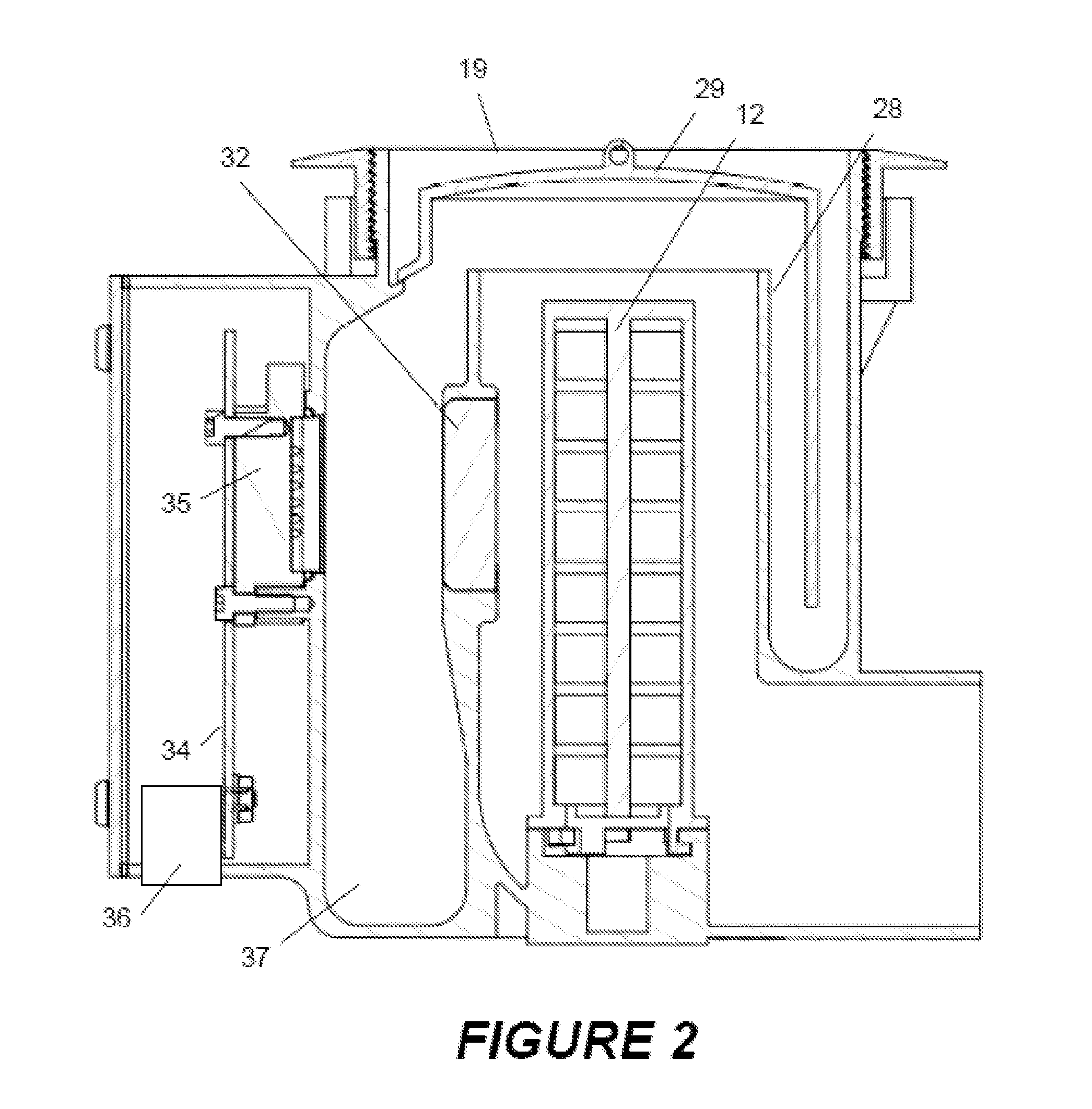Domestic water recycling apparatus and fluid contamination detection system therefor
a technology of fluid contamination detection and domestic water, which is applied in the direction of service pipe system, investigation of moving fluid/granular solids, treatment water, etc., can solve the problems of high water consumption, scarce clean water, and high water treatment costs, and achieve stable flow of used water, prevent turbulence, and proper filter efficiency
- Summary
- Abstract
- Description
- Claims
- Application Information
AI Technical Summary
Benefits of technology
Problems solved by technology
Method used
Image
Examples
Embodiment Construction
[0024]Shown in FIG. 1 is a water recycling shower unit according to the present invention. Water enters the shower system via hot and cold water supply pipes 17. The valve apparatus 18 controls the relative flow of hot and cold water, respectively, from the pipes 17 to a mixing chamber 16. Water is then drawn from the mixing chamber by pump 20, and directed past disinfection unit 21 and valve 22 to conduit 26. The water is thereafter directed via the conduit 26 to showerhead 10, which distributes it within a space 30 below, where a user may be located.
[0025]Water output via the showerhead eventually passes through a drain to a collection chamber 13, along with any contaminants that may be been accumulated within the shower space 30. Located in the collection chamber 13 is a filtration apparatus 12, and access to two possible outflow conduits for the water collected therein. A first is via wastewater pipe 31, and the other is via recycling pipe 33, which directs clean water back to m...
PUM
| Property | Measurement | Unit |
|---|---|---|
| pore size | aaaaa | aaaaa |
| pore sizes | aaaaa | aaaaa |
| characteristic wavelength | aaaaa | aaaaa |
Abstract
Description
Claims
Application Information
 Login to View More
Login to View More - R&D
- Intellectual Property
- Life Sciences
- Materials
- Tech Scout
- Unparalleled Data Quality
- Higher Quality Content
- 60% Fewer Hallucinations
Browse by: Latest US Patents, China's latest patents, Technical Efficacy Thesaurus, Application Domain, Technology Topic, Popular Technical Reports.
© 2025 PatSnap. All rights reserved.Legal|Privacy policy|Modern Slavery Act Transparency Statement|Sitemap|About US| Contact US: help@patsnap.com



